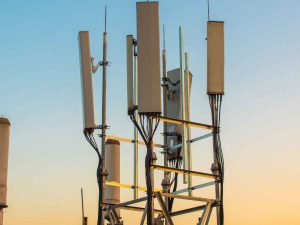Network Transformation from 4G to 5G

Course Overview
The evolution from traditional 4G to 5G is one of the few big challenges facing the telecom industry in the coming years. New 5G technology is expected to introduce flexibility and agility in the network that will address the needs of different services and industry verticals.
This course addresses and analyses the different strategies that can be utilised to transform network based on 3GPP R15. It covers an overview of the current situation on 4G or LTE networks, and the different options for migration to achieve final 5G solution in the radio access and core. In short, the network transformation applies end-to-end, on 5GC as well as NG-RAN.
Participants will understand the steps to migrate 5G RAN from Non Standalone (NSA) to Standalone (SA) using different flavours. It introduces cloud solutions in the RAN. For the Core network part, participants will learn a new solution called SBA (Service Based Architecture) and how to achieve maximum automation.
The course provides key features and functionalities of 5G New Radio (NR) and 5G Core Network, such as split architecture of NG-RAN, cloud RAN options, CUPS, Dual Connectivity and complementary technologies like network slicing, MEC as well as automation and orchestration.
Finally, this training presents an overview of network evolution and how to achieve network automation through technologies such as SDN and ONAP.
Target Audience
This course is designed for Network Design Engineers, Network Planning Engineers, Network Operations and Maintenance, Managers in the Radio and Core, and anyone interested to acquire knowledge of the 5G technology.
Duration & Training Format
- Classroom: 4 days
- LIVE Virtual: 28 hours
- A minimum of 8 or more participants is required for a Classroom session to commence.
- A minimum of 6 or more participants is required for a LIVE Virtual session to commence.
- LIVE Virtual courses can be conducted for 5 hours or 7 hours daily. Please note that the number of training days will be extended if you opt for 5 hours daily.
Upcoming Course Dates
There are no upcoming course dates currently scheduled for this course. If you are keen on attending this course, please register your interest and indicate your preferred start/end training dates via our course enquiry form for us to open a Classroom/LIVE Virtual class schedule for this course.
Course Objectives
At the end of this course, participants will:
- Understand the different options to transform current 4G network to 5G
- Identify key components in order to realise the network transformation and evolution
- Describe different scenarios to deploy 5G networks from NSA to SA solution according 3GPP Release 15
- Evaluate scenarios to build the new network architecture
- Describe options to be more cost-effective in network deployment
- Understand the new 5G Core architecture based on services
- Describe the principle changes in the Core network to allow the network to be more flexible and agile, and enable network automation
- Identify features such as Network Slicing, Mobile Access Edge Computing and Network Function Virtualization and their roles in 5G
- Explain options in automation of network operations
- Illustrate roaming scenarios for 5G interconnection
Key Benefits
This course will help participants gain a solid understanding of the 5G network. They will learn different steps to network transformation and migration strategy to 5G networks. They will also acquire strong foundational knowledge of the main network features and on how to advance the current 4G networks. A combination of theoretical and practical uses cases with exercises will be provided to help participants validate the knowledge they have learnt.
Course Outline
- Current situation of 4G networks (Radio and Core)
- Overview of the 4G Architecture
- Voice / Data Situation
- Possible Deployment Scenarios (Migration Path from 4G to 5G)
- Introduction to 5G
- Definition of NSA vs SA
- Strategy to Migrate the 4G to 5G
- Introduction to New Radio Architecture
- Key Concepts( Numerology, Frame Structure, Resource Block, Bandwidth, Scheduling, Spectrum, Modulation, etc.)
- Main Radio Features Specifies in 3GPP R15
- Dual Connectivity
- Massive MIMO
- Beamforming vs Spatial Multiplexing
- Network Sharing between Operators
- Passive vs Active Sharing
- MOCN vs MORAN
- Introduction to Dynamic Spectrum Sharing
- Cloud RAN Architecture Options (DRAN, CRAN, ORAN)
- Traditional Solutions
- Evolution to RAN Virtualization
- Split Option for CU and DU
- Open RAN Solutions
- Control and User Plane Separation (CUPS)
- CUPS Solution
- Benefits of the Separation
- Network Function Virtualization (NFV)
- Definition of NFV
- Components of Virtualization
- Container and VNF (Microservices)
- Different Option to Virtualize the Network
- Introduction to 5GC (SBA, Service Based Architecture)
- Definition of the SBA
- Principal Components of SBA
- Network Slicing (NS) in 5G
- Enabler and Reasons for NS
- Architecture of NS and Management
- Description of 5G Uses Cases
- Implementation of Mobile Access Edge Computing (MEC)
- MEC Definition and Architecture
- Benefits and Use Cases of MEC
- Operation and Network Maintenance (SDN and ONAP)
- SDN Definition and Architecture
- ONAP Scope, Main Topic and Architecture
- Roaming Scenarios for 5G
- Evaluation Different Options for 5G Roaming
- 5G Security
- 5G Security Overview
- Security Domains and Nodes Impacted
- Main Procedures Involved
Pre-requisites
- Knowledge in the radio and core in LTE networks is recommended
- A good understanding of the 4G architecture and procedures



